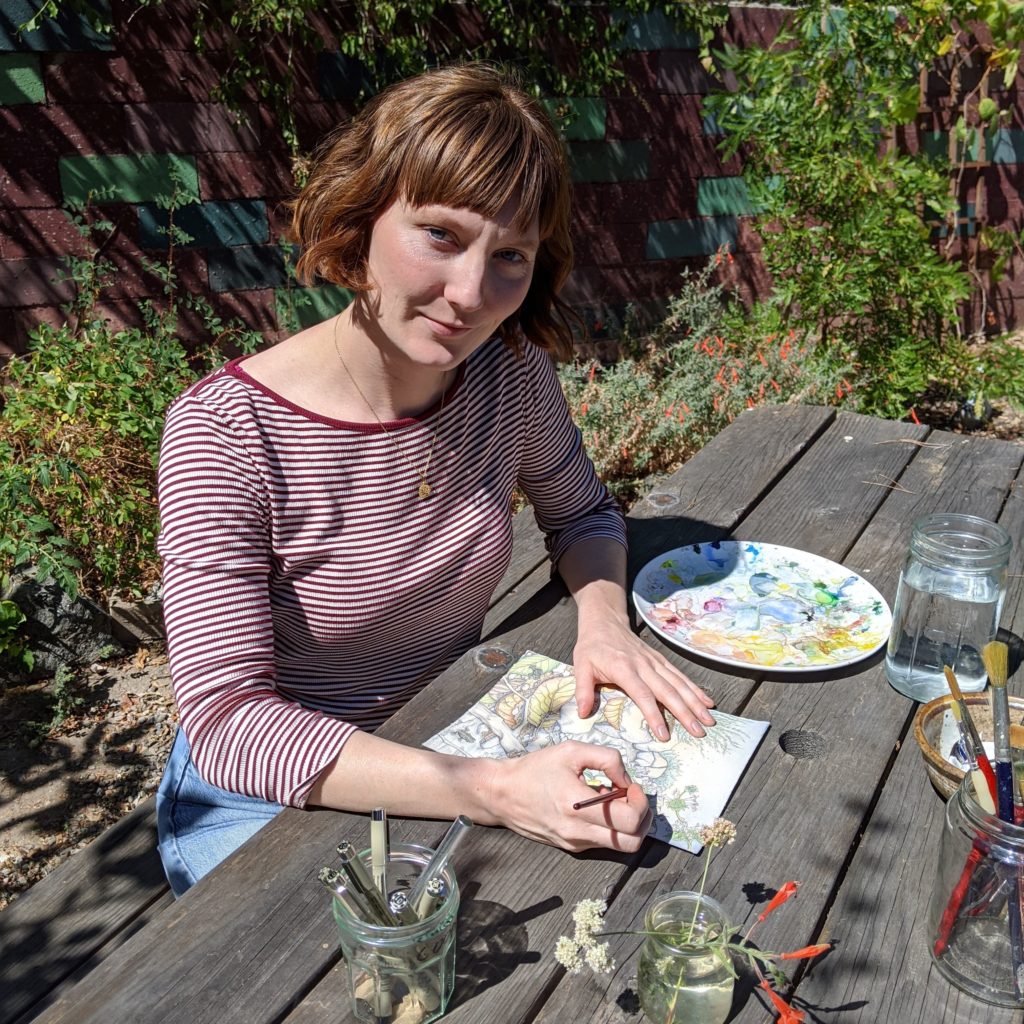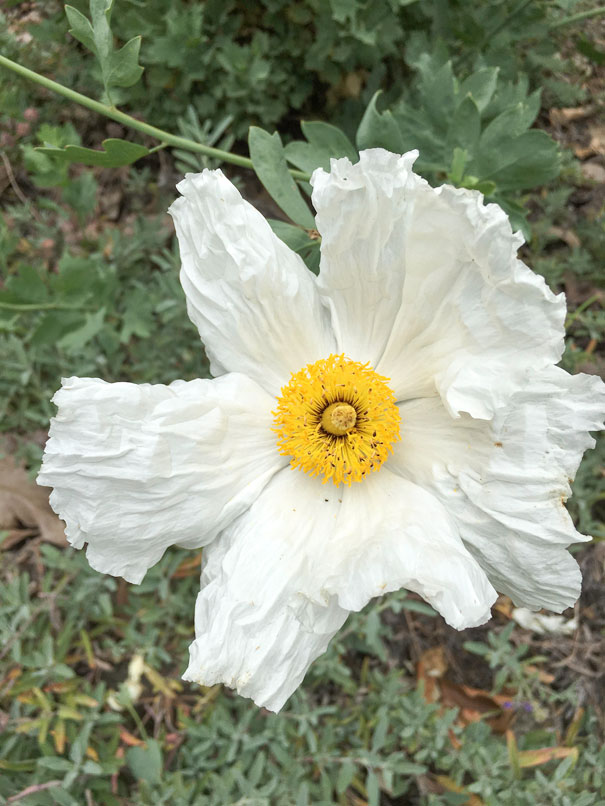LETTERS FROM THE GARDEN
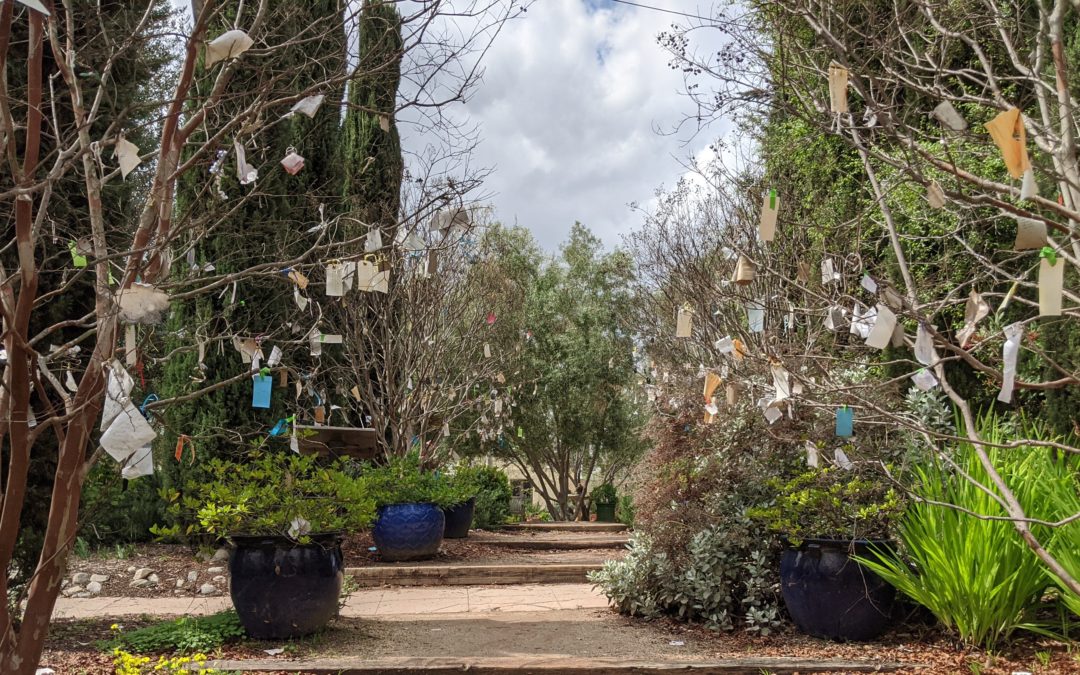
Arlington Garden IDEA Statement
Arlington Garden’s Commitment
When 275 Arlington Drive was nothing but a barren lot, our founders Betty and Charles McKenney envisioned Arlington Garden to be a place where everyone, no matter their background or circumstance, could find joy and inspiration amongst nature.
Over the years, the Garden’s leadership has sought to carry forward this vision by keeping the garden free and open to the public, as well as by engaging with our stakeholders and in our own governance. But we know we cannot be complacent. As a community-built habitat garden, we want to represent our community’s cultural and ecological diversity, advance gardening practices that regenerate and heal the planet, and be an advocate for the right of all to equitably access nature and public space. And so, after a year-long journey of self-reflection, honest conversations, and learning, we are humbled to share with you our first Inclusion, Diversity, Equity and Access (IDEA) statement. It seeks to underscore our organization’s commitment to these fundamental values, lay the groundwork for how they will affect our priorities moving forward, and hold us accountable.
Our path certainly does not stop here. As a society, we are facing monumental challenges posed by climate change, racial inequity, and environmental injustice. But we truly believe that Arlington Garden has a role to play in driving local solutions to such global problems. Indeed, the Garden’s very existence is an embodiment of the positive change that is possible when we come together with an open heart. We invite you to join us in exploring how the Arlington Garden community can contribute to this historic moment and uplift voices working for a better, more just world. We hope to hear from you.
As always, with immense gratitude,
The Board and Staff of Arlington Garden in Pasadena
Please read Arlington Garden’s IDEA Statement below. read more…
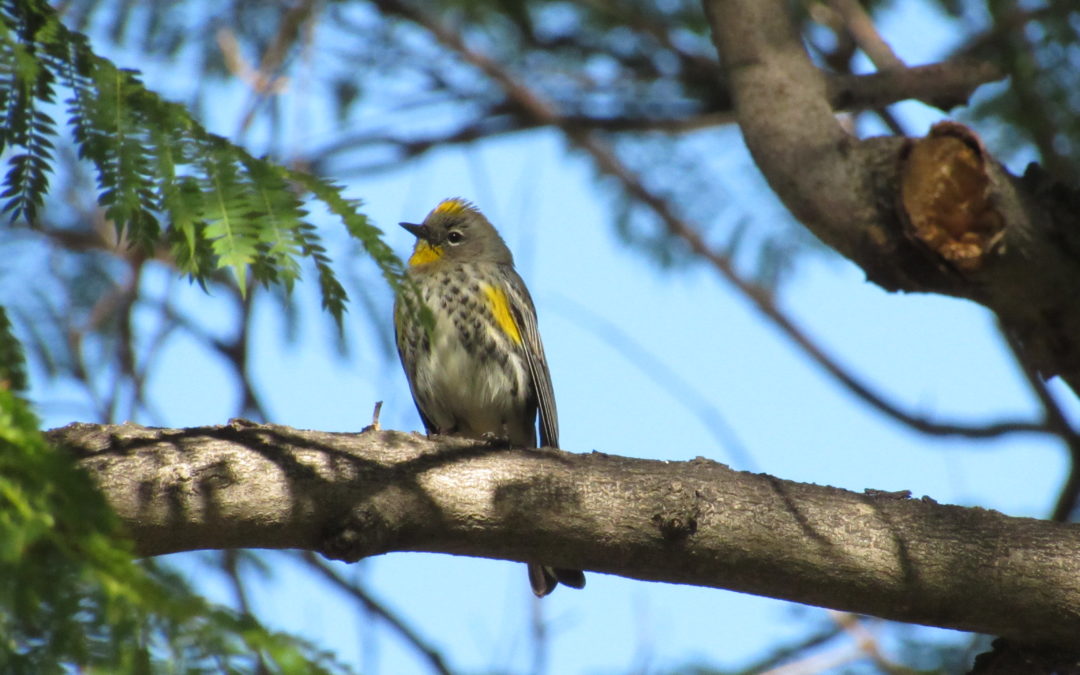
Birds of Arlington: Bob Gorcik
image from Michelle Matthews
Bob Gorcik volunteers in Arlington Garden when his work schedule allows him to do so and has been a birder since he was in middle school. As an undergraduate, he had multiple opportunities to as a wildlife research assistant, where he got to study birds up close.
Arlington Garden in Pasadena is a local birding hotspot. The native California and Mediterranean flora found throughout the garden provide food sources for a great diversity of bird species. The fact that the garden is made up of smaller sections representing the many ecosystems that can be found in our region also contributes to the diversity of birds that can be found in it. Throughout 2021, I will be sharing a short segment on different subgroups of birds that can be found throughout Garden and in backyards around Pasadena.
The Garden can be a great spot for birdwatching anytime of the year, but the winter months from December through March are particularly productive. In order to escape the cold weather, many birds who spend their summers and breeding seasons in the mountains and northern conifer forests overwinter here in coastal California. Below is a summary of some of the winter residents one may find in Arlington Garden and surrounding areas of Pasadena.
Birds that can be frequently seen in the garden include Hermit Thrushes (Catharus guttatus), Golden-crowned Kinglets (Regulus satrapa), and Western Tanagers (Piranga ludoviciana). The Hermit Thrush has one of the most beautiful flute-like songs of any bird, evoking forested wilderness, however they do not sing this song in the winter. The oak grove and conifer grove on the northwest side of the garden are perhaps the best places to spot these birds. Another bird that is commonly found here in the winter is the Cedar Waxwing (Bombycilla cedrorum), a bird with a great slick-back crest with dark marks around the eye and a spot of red and yellow on the tail. These birds are major fruit and berry eaters. They fly around in flocks and can be quite common, although they tend to stay high up in the canopy of trees, so that it can be difficult to observe them. read more…
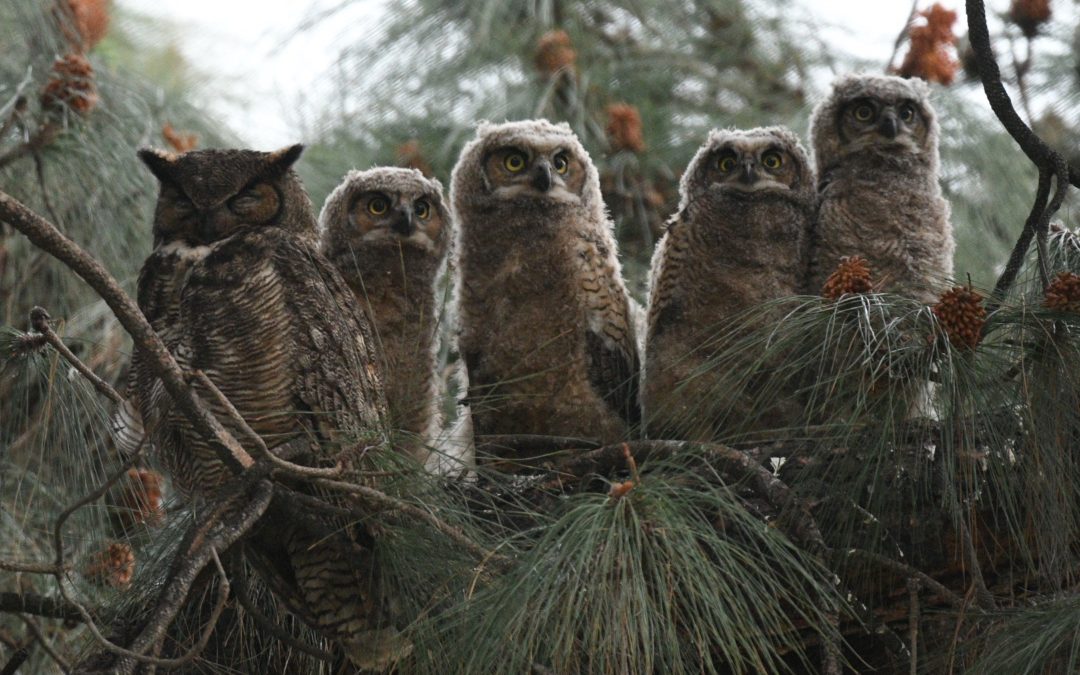
Friends of Arlington: Roberto Gabriel, Raptor Photographer
Michelle Matthews: In a new occasional interview feature, we talk with friends of Arlington Garden about their passions. I first met Roberto Gabriel in July of 2017 when I started as Executive Director of Arlington Garden. I spoke with him on his way to work, and this is an edited version of our conversation. All images courtesy of Gabriel Roberto.
 MM: Can you give us a little background about yourself? What drew you to photography? And how do you think it relates to the rest of your daily life?
MM: Can you give us a little background about yourself? What drew you to photography? And how do you think it relates to the rest of your daily life?
RG: I’ve been taking photos for about three and a half years now: a friend at my Muay Thai gym lent me his camera and encouraged me to take photos.
I was born in El Salvador and my grandmother is Palestinian. I was raised in Belize and came to the US when I was 14. It was a shock to me how developed LA was, and I didn’t find natural spots until I was in my 20s while running and training in Eaton Canyon and Ascot Hills. I’ve been an EMT for five years, and typically work 12-14 hours each shift.
MM: You are clearly a raptor enthusiast: what is it about raptors that interests you?
I love all birds of prey – love owls and their big eyes, and try to catch them before sunrise – you have to be patient and wait, because they are really good at blending into the environment. I love when their eyes are all dilated first thing in the morning and the way they hunt. read more…
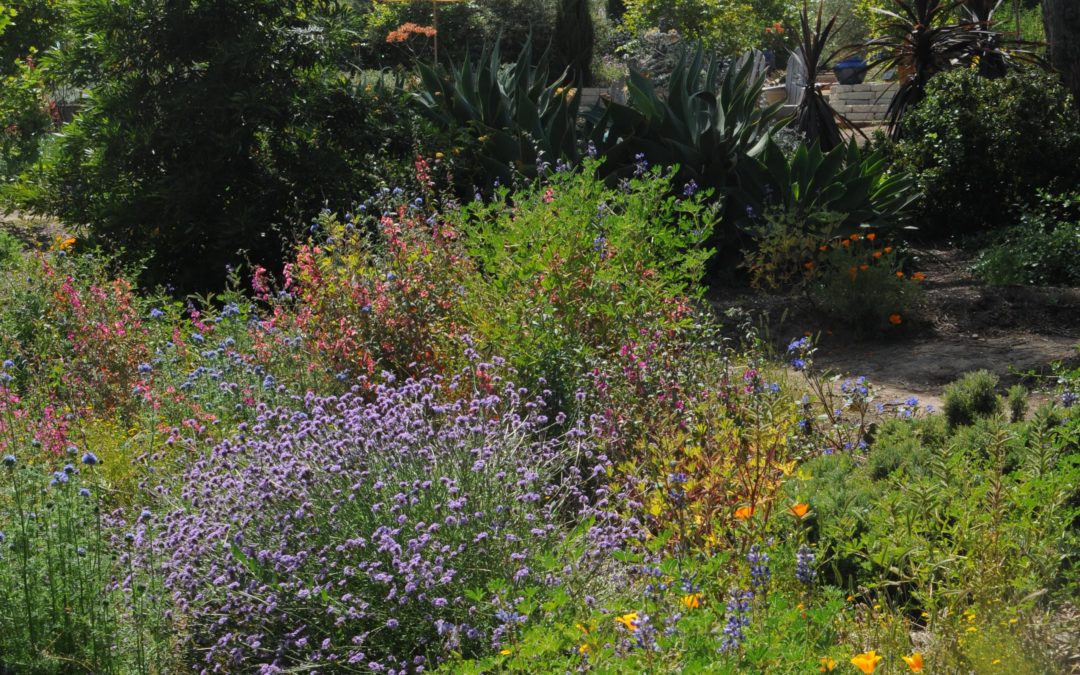
Chaos and Diversity, Designing With Emotion: Bob Perry
Robert (Bob) Perry, FASLA is Professor Emeritus of Landscape Architecture at Cal Poly Pomona. He has been a landscape architect since 1972 and has written three award-winning books on Californian and Western landscape plants. His most recent book is Landscape Plants for California Gardens, which received an ASLA Southern California Chapter Honor Award in 2011. He is currently working on a website reference tool for gardeners and designers. The interview included Michelle Matthews, Executive Director of Arlington Garden, and it has been edited for both clarity and length.
All website and landscape images provided courtesy of Bob Perry.
AG: There are clearly aspects of the landscape, climate, and plant life in Southern California that fascinate you. Are you originally from Southern California?
 Robert Perry (RP): I am a California native. I was born less than five miles from Arlington Garden at Huntington Hospital, and I grew up in both Pasadena and Eagle Rock. I have a deep connection to much of the city of Pasadena, although it’s changed enormously in recent years, and to the San Gabriel Mountains and the Arroyo Seco. I went to college at Cal Poly Pomona and eventually moved as far away as Berkeley for graduate school. Following graduate school, I had the opportunity to return to Cal Poly Pomona where my interest in plants, and my focus on writing and teaching, really began.
Robert Perry (RP): I am a California native. I was born less than five miles from Arlington Garden at Huntington Hospital, and I grew up in both Pasadena and Eagle Rock. I have a deep connection to much of the city of Pasadena, although it’s changed enormously in recent years, and to the San Gabriel Mountains and the Arroyo Seco. I went to college at Cal Poly Pomona and eventually moved as far away as Berkeley for graduate school. Following graduate school, I had the opportunity to return to Cal Poly Pomona where my interest in plants, and my focus on writing and teaching, really began.
Without a doubt, I can speak most confidently about plant ecology and architecture in Southern California. Right now, I am working on a website that is focused on plants in the state of California as a whole. Hence, I have an endless checklist of places to visit in Central and Northern California to strengthen my understanding and descriptions.
AG: You are a landscape architect with a long history in Southern California. As well as a designer, you are also an educator, author, and academic. Could you briefly describe these different aspects of your professional career?
RP: At the end of graduate school, I took the license exam [for landscape architecture] and began teaching at Cal Poly Pomona in 1972. Cal Poly Pomona was not a research institution when I was hired, so faculty were expected to be engaged in practice. I have enjoyed teaching and practicing architecture in parallel all these years.
I would say my design work started out on a fairly limited scale. I worked in small landscape offices concurrently with teaching, nothing of great note or distinction, but as with any landscape project, I gained experience by being exposed to a wide variety of things. My design practice was the lesser of my two areas of development until I wrote my first book in 1981. That book provided me with a lot of visibility and increased my opportunities. read more…

Sweet Sixteen
pictured above: Mayita Dinos, designer of Arlington Garden, and community members soon after breaking ground on construction of the garden.
Dear Garden Supporters,
2020 will be remembered as the year everything changed, and I hope that 2021 will be the year that everything started to change for the better, but that will be up to us.
This year marks our 16th Anniversary, our “Sweet 16,” because the garden was founded from togetherness and community and brings joy and respite to so many. We will continue to celebrate safely from a distance, until we can gather in person, with more virtual programs organized by our Programs and Development Manager, Paloma Avila and interviews in Letters from the Garden, by Communications and Volunteer Manager, Andrew Jewell. We also have a new Garden Representative, Maggie Smart McCabe, to enforce photo permits and sell marmalade, and a new board president Kimberly Fung Jacobsen. We are kicking off the year with our annual Board retreat, and we will share the results of last year’s work in our upcoming annual report as well as in our updated strategic plan and diversity, equity and inclusion statement. read more…
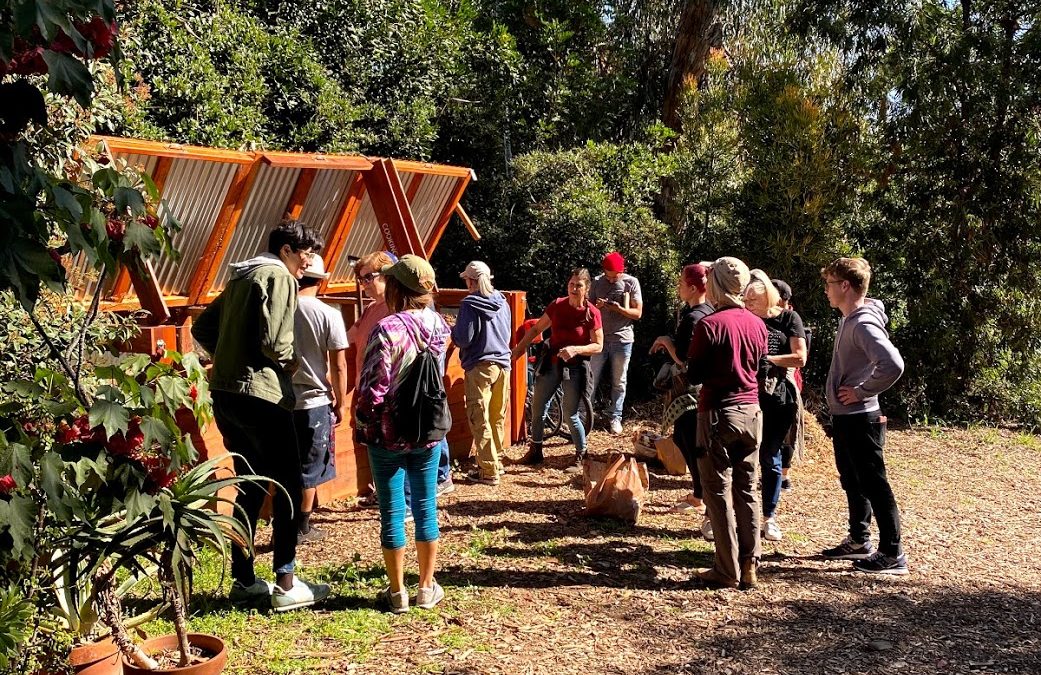
The Little Garden That Could
It has been exactly eight months since we went on lockdown due to the COVID-19 pandemic. Since that time, we have seen a significant reduction in earned income, but more people are coming to the garden, since we have remained open while beaches, playgrounds, paid access gardens and national parks closed. Many of our regular volunteers stopped coming as many of them are high-risk, including some of our staff.
This is why we took the precaution of temporarily closing the garden on Tuesdays while we conduct maintenance. With the all time record breaking heat, ongoing 100+ degree days (now a month into fall) smoke from devastating wildfires since August, we haven’t been able to garden as much, yet Arlington remains healthy, albeit a little more wild than usual. read more…
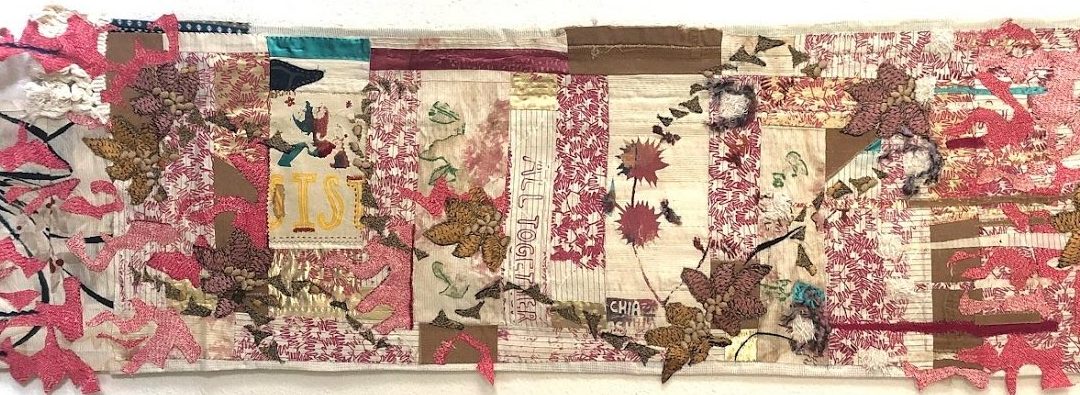
Landscape Pedagogy: Tahereh Sheerazie
Tahereh Sheerazie is a fabric artist, landscape designer, educator, and avid hiker. In this conversation, she discusses her artistic and design inspirations, her views on education, and her work establishing a school garden in Shigar, Pakistan. You can learn more about her on Instagram and the world wide web. The image above depicts a screen-printed and embroidered fabric panel by Tahereh Sheerazie.
All images provided courtesy of Tahereh Sheerazie.
AG: You are an artist and a garden designer (obviously, those need not be separate things). Could you describe your art practice?
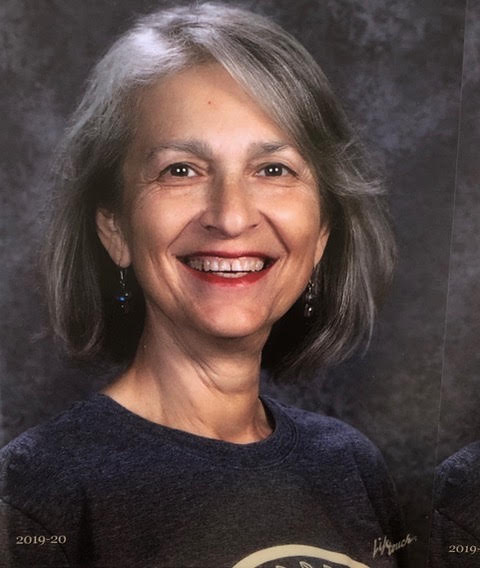 Tahereh Sheerazie (TS): They call my work “Fabric Art” in today’s parlance. I call it “reusing fabric scraps of any color, shape, size and texture.” Mostly, the resulting ‘art’ that I produce is a quilt. From time to time, I use the fabric to simply collage together abstract depictions (unintentionally) of the garden and all that encompasses its life.
Tahereh Sheerazie (TS): They call my work “Fabric Art” in today’s parlance. I call it “reusing fabric scraps of any color, shape, size and texture.” Mostly, the resulting ‘art’ that I produce is a quilt. From time to time, I use the fabric to simply collage together abstract depictions (unintentionally) of the garden and all that encompasses its life.
I used to be a co-owner of a clothing company, so I have had access to infinite supplies of fabric. I also come from a culture where our clothing uses lots of fabric: there is never a shortage of cutting up a shalwar, a kamiz, a gharara, a sari or a duppatta that have seen their day.
AG: What motivates your work as an artist?
TS: The simplest way I can describe what informs my art is that it is an expression of being me.
The seasons, the mood, the conversations, personal and/or political, the time of life, are all aspects [of me] that drive the compositions. Fabric pieces are the ink that write the words, which are sometimes really simple to express but are often complex ideas that I have no other way to describe eloquently except by putting all the pieces together. read more…
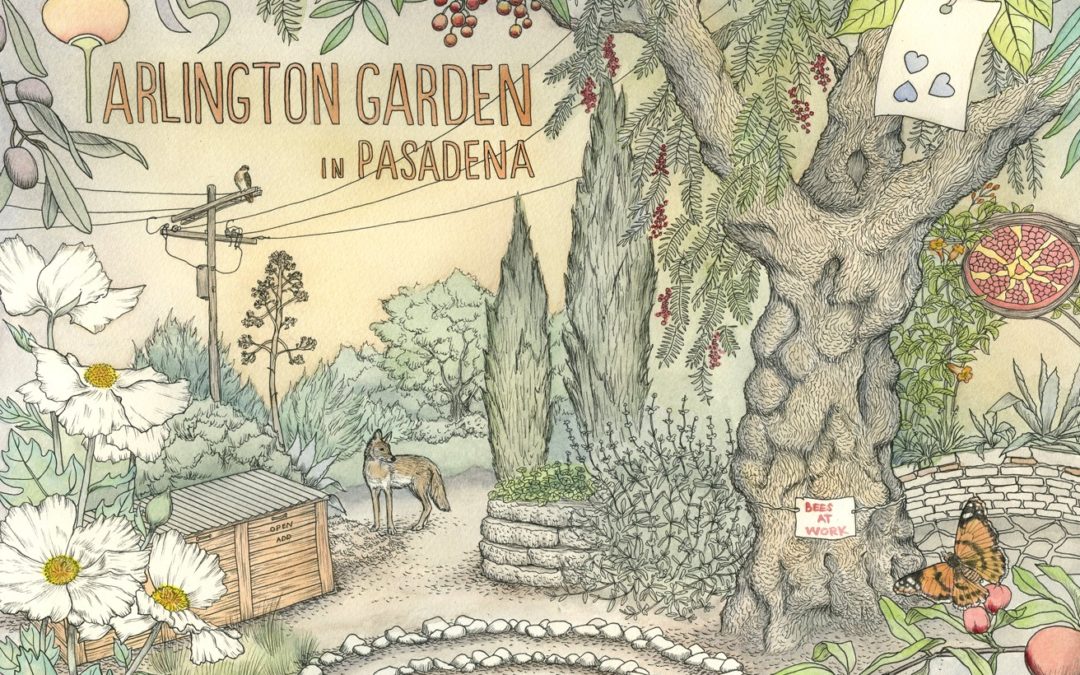
An Artist of Ecosystems: Margaret Gallagher
For the next month, Letters from the Garden will be focusing on art related to gardening and the natural world. The artist and naturalist Margaret Gallagher created Arlington Garden’s 15th Anniversary poster (see detail from the poster above) which is available as a black-and-white digital coloring page and a special edition color print for the garden’s crowdfunding campaign. She is currently an artist in residence at California Botanical Garden and is studying to become a botanist. All images provided courtesy of Margaret Gallagher.
AG: In August, Arlington Garden is celebrating art in (and about) gardens and wildlife. Your work is predominantly about wildlife and the natural (viz. non-human) environment. Can you talk a little about how you came to focus on these topics in your art?
MG: I’ve always been in love with nature. I had a really special childhood – I grew up surrounded by nature on a farm in rural Oregon with a river running through it and a woodland nearby. My mother is an avid gardener and my dad is a birder, and they imparted their appreciation for the natural world to their kids. I could walk out the door by myself or with my siblings and spend all day in the gardens and fields looking at bugs. For a long time, that was enough for me – I just liked to be outdoors, to soak up the feeling of it. When I moved to Los Angeles for college (I studied art at Occidental) that changed. Los Angeles was such a different world, and I was completely fascinated by the complex intermixing of wildlife and people here.
You live in this vast urban landscape, yet coyotes stroll down the middle of the street at night, raucous flocks of parrots rule the neighborhood trees, and you round a corner onto an undeveloped hillside covered with native plants and butterflies. I didn’t have a car for a long time – I got around by bike – so I saw a lot more of the city wildlife than you do when you drive. The mystery of the urban ecosystem just totally fired up my imagination, and I felt compelled to tell this story through my artwork. read more…
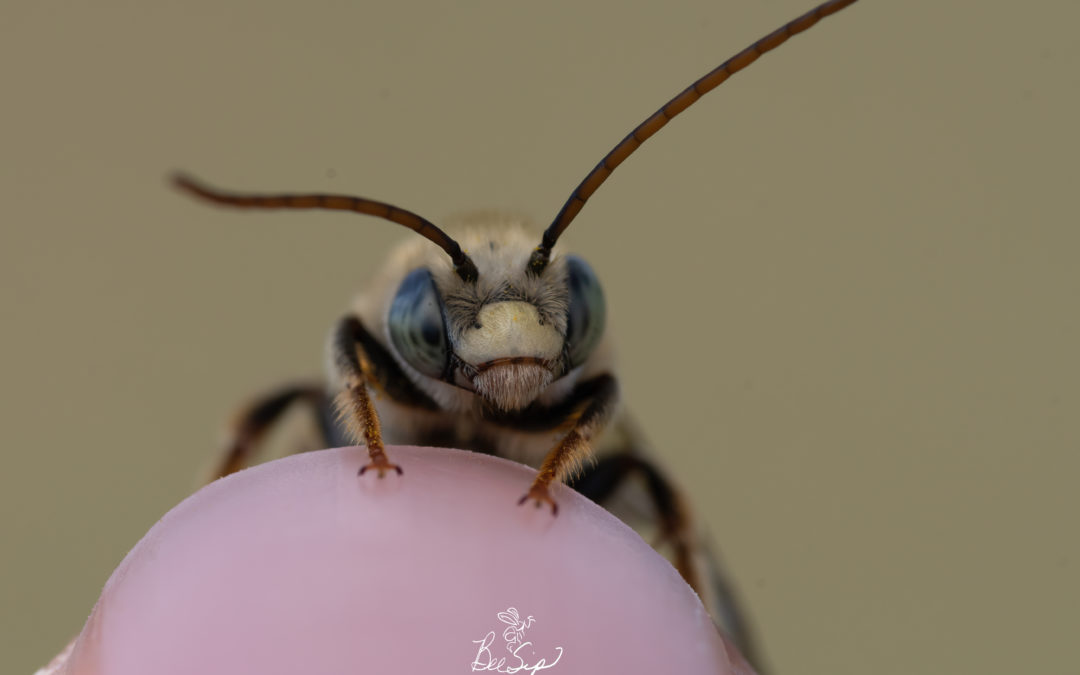
Krystle Hickman, Native Bee Photographer (Earth Share Episode 6)
Melissodes sp. on the photographer’s finger, photo courtesy of Krystle Hickman
In partnership with LA Nature for All, Earth Share is a series of conversations on IGTV with the goal of sharing knowledge and inspiration with organizations and individuals caring for the Earth. The following is a partial transcript of our conversation with Krystle Hickman, native bee photographer and community scientist. It has been edited for length and clarity. All images courtesy of Krystle Hickman.
Click here to watch the complete episode.
 Paloma: What does nature mean to you and how would you describe it?
Paloma: What does nature mean to you and how would you describe it?
Krystle: I guess that’s kind of a complicated question to answer because it changes and evolves with me. Whatever I say right now may change in the future. As a child, nature was something where I went outside and just enjoyed it. There wasn’t a lot of thought that went into it. As I got older it became a place where I could escape and meditate. Since I have gotten into photography lately and specifically bee photography, I started to see how complex nature actually is and how there are different interlocking features. It is something I am really starting to admire, appreciate and really value.
PA: What are your earliest memories of being in nature?
KH: I would say the first memories I have of being in nature are of when I lived in Omaha, Nebraska… I remember my mom had these rose bushes on the side of the house and there were ladybugs just all over it. So I would spend hours with the ladybugs. In certain times of the year, box elder bugs would show up, and then it changed to spiders, so I would have spiders in cups that I would bring inside that no one liked except for me … I went camping a lot too. Specifically with the Girl Scouts: they would call me the “Bug Inspector” because I would just pick up anything! read more…
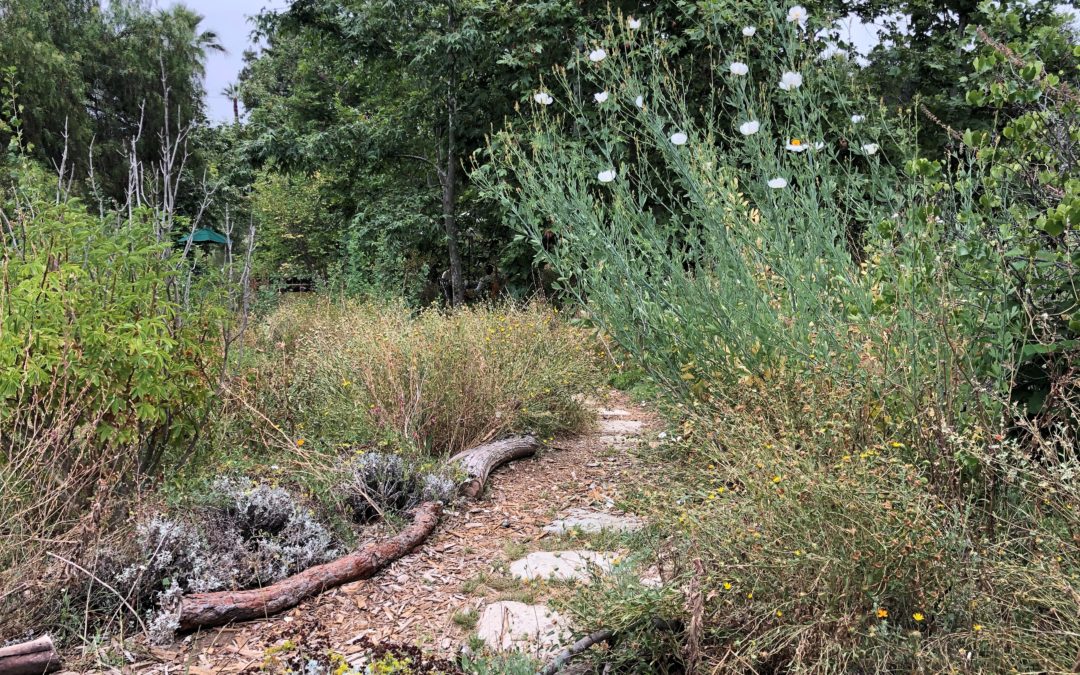
State of the Garden: Pandemic Summer Edition
Some gardens look the same year-round. Lawns are mowed and treated; hedges are trimmed; weeds are cut-back; and leaves are blown away. In contrast, Arlington Garden wears its changes on its sleeve. The garden appears quite different in August than it does in March.
These changes are rooted in Arlington Garden’s vision of gardening: we are a climate-appropriate, habitat garden using regenerative gardening techniques.
We are a climate-appropriate habitat garden
Arlington Garden is a climate-appropriate, habitat garden, which means we grow plants that evolved in mediterranean climates with wet winters and dry summers. In the summer, these plants go dormant (not dead) and adorn the garden with the subtle colors of dormancy: gold, amber, and sienna predominate, interspersed with white from the native White Sage (Salvia apiana), sage green from Artemisia californica, and punctuated by contrasting rust-toned buckwheat (Eriogonum) seed-heads.
Many so-called “weeds” provide food and shelter to native birds and insects, so we leave some in the garden. If you have visited recently, you may have noticed tall sow thistles (plants in the genus Sonchus), which attract ladybugs and provide ample food for goldfinches. And you will have seen some weedy, non-native grasses, which provide shelter for native bees. read more…

